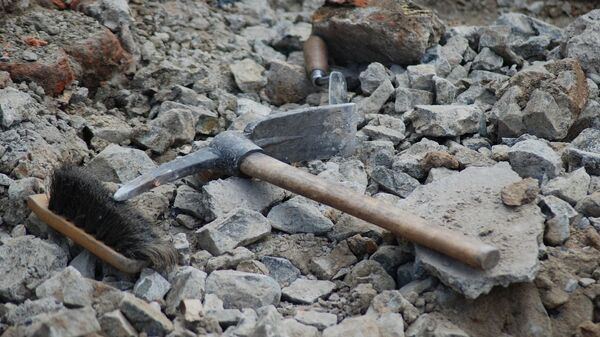The two sets of footprints were discovered in 2016 by geologist Allan Krill while he was hiking with students in Arizona’s Grand Canyon. Analysis of the footprints by Steve Rowland, a professor emeritus of geology at the University of Nevada, Las Vegas, revealed that they were both potentially left behind by the same unknown species.
— WPSU (@WPSU) August 23, 2020
The footprints were made in dry sand over 300 million years ago in what is now Arizona. Rowland believes that the impressions, which were found on the Bright Angel hiking trail, were preserved after being buried by sediment.
— Pattrn (@pattrn) August 24, 2020
In fact, the footprints were found on the side of a boulder that rolled off a nearby slip and exposed a stratigraphic cross section of the Manakacha Formation, a layer of ancient rock that dates back 315 million years.
"These are by far the oldest vertebrate tracks in [the] Grand Canyon, which is known for its abundant fossil tracks," Rowland told Science Alert.
"More significantly, they are among the oldest tracks on Earth of shelled-egg-laying animals, such as reptiles, and the earliest evidence of vertebrate animals walking in sand dunes,” he added.
Although it’s not possible to state exactly what species of animal left behind the footprints, Rowland believes they were left by early amniotes, the clade to which modern-day reptiles, birds and mammals belong. An analysis of one set of footprints revealed that the mystery animal was about a foot long and walked with a lateral sequence gait.
The footprints also seem to bear a resemblance to Chelichnus, a set of fossil tracks found in Scotland “made during the Permian Period by a four-legged animal with five toes on each foot,” according to the US National Park Service. The Permian Period lasted from 299 to 251 million years ago.
In a statement to the Arizona Republic, Rowland explained that his cat helped him better understand lateral sequence gaits, as many four-legged animals move in this manner.
“She [Rowland’s cat] uses a lateral sequence walk, where the left rear foot moves and then the left front, and then the right rear and the right front and so on,” he explained.
The second set of footprints was potentially left by the same species, and perhaps even the same animal. However, the second set of footprints is characterized by a slightly different type of gait, as the animal appeared to move faster.

